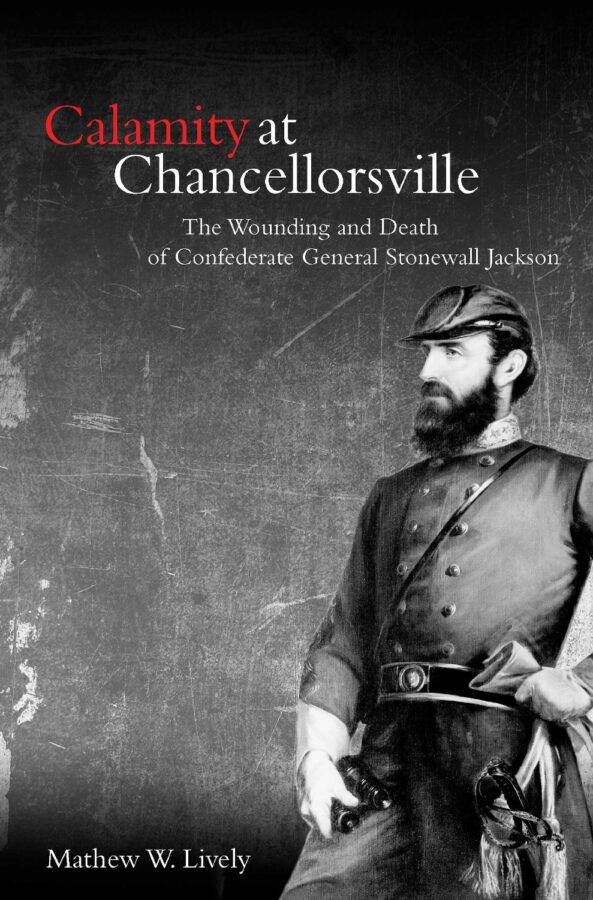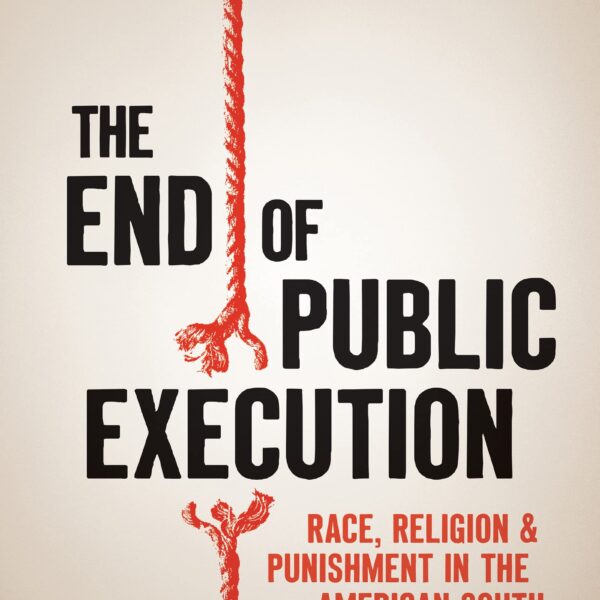 Calamity at Chancellorsville: The Wounding and Death of Confederate General Stonewall Jackson by Mathew W. Lively. Savas Beatie, 2013. Cloth, ISBN: 1611211387. $27.50.
Calamity at Chancellorsville: The Wounding and Death of Confederate General Stonewall Jackson by Mathew W. Lively. Savas Beatie, 2013. Cloth, ISBN: 1611211387. $27.50.
Calamity at Chancellorsville delves into the series of events that immortalized Confederate General Thomas Jonathan Jackson and ensured that “next to Robert E. Lee, no individual became more revered in the South and beloved by its people” (xvii). A professor of internal medicine and student of antebellum medical practice, Dr. Mathew W. Lively’s work contributes to the growing body of literature on Civil War medical history and fills a gap in the literature on the battle of Chancellorsville. The book provides the only full-length examination of Jackson’s wounding and death. A work of microhistory, Calamity zooms in on Jackson’s final twenty days to recreate the planning and execution of the stunning attack on the Union right, the ambush by his own troops that inflicted his mortal wound, and the dedicated efforts of the doctors who attempted save his life. Lively fully contextualizes the events surrounding Jackson’s demise. Operational and tactical summaries of the unfolding battle never leave the reader lost in the details of Jackson’s night march. Likewise, explanations of nineteenth-century medical techniques (and limitations) allow the reader to understand the treatment regimen adopted by Jackson’s doctors.
Jackson lurks in the background for most of the book. Instead, the leading characters are the Reverend Tucker Lacy, Jedediah Hotchkiss, and Hunter Holmes McGuire. Lacy, the II Corps’s unofficial chaplain, judged from his knowledge of the local geography and the abundant moonlight that Jackson should attempt a night march on April 30. Hotchkiss, the unofficial corps topographer, was instrumental in selecting the route for the flank march. McGuire, the corps medical director, performed the amputation of Jackson’s left arm and was the primary physician responsible for the general’s care.
Chapters two, three, and four recount the immediate background to the engagement, Lee and Jackson’s joint development of the famous flank march, and the stunning, surprise envelopment that collapsed the Union right at Chancellorsville. Most of this information will be standard fare for readers familiar with the battle. Those less well acquainted will be treated to a lively narrative of events. The remaining chapters concern Jackson’s wounding, treatment, and death.
The author’s microhistorical approach suggests that the success of Jackson’s battle plan contributed directly to his death. Great disorganization, exhaustion, and disorientation afflicted the lead divisions by nightfall on May 1. Momentarily deprived of good command and control, the men of the 18th North Carolina yelled “Yankee cavalry” when they fired into the staffs of Ambrose Powell Hill and Jackson. The “fog of war” also retarded the swift arrival of an ambulance to assist Jackson. He was first evacuated by stretcher and, in the process, suffered a grievous fall. The accident damaged his right lung and facilitated the pneumonia that later killed him.
For professional historians, the two most useful parts of the book may be the appendices. In the first appendix, Lively addresses a number of the controversies surrounding Jackson’s wounding and death. Using bullet trajectory analysis for the entry and exit wounds in combination with the most reliable primary accounts, the author supports the traditional view that Jackson’s staff was ambushed after moving down the Orange Plank Road. The weight of the documentary evidence also confirms that the wounded Jackson fell only once. Lively accepts Jackson’s last words as traditionally reported, but notes that it is most likely he spoke them about thirty minutes before death. The author’s analysis of Civil War era medical techniques and McGuire’s detailed notes confirm pneumonia as the cause of death. Finally, Lively concludes that the precise location where Jackson arm is interred – the tiny monument at Ellwood Manor notwithstanding – is unknown.
In the shorter, second appendix, Lively assesses the evolution of Stonewall Jackson’s historical image, though obviously in less analytical depth than Wallace Hettle’s Inventing Stonewall Jackson. While the sobriquet of “Stonewall” may be the general’s most enduring, during the war he was frequently compared to Oliver Cromwell for both his military brilliance and religiosity. In death, he became a martyr for the southern cause, and hagiographers began constructing an icon equal parts eccentric zealot, loving husband, and military genius.
This book provides readers with a crisp narrative of events and two excellent, analytical appendices. Lively fulfills his purpose, and Calamity at Chancellorsville will be a launching pad for future research into the life and memory of Stonewall Jackson.
Thaddeus M. Romansky is a graduate student in history at Texas A&M University. His thesis is titled, “‘The Rank and File are Determined’: Citizenship, Authority, and Mutiny in the Union Army, 1861-1865.”




